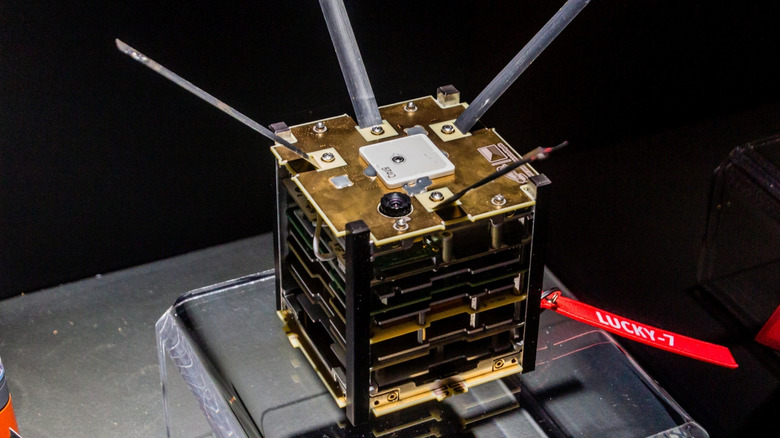Mexico Will Finally Launch A Satellite For The First Time With Its Own Tech, And Here's Why
When you think about the dominant players in space exploration, the United States, Russia, and China likely come to mind. America and Russia launched the first satellites in the 1950s. By comparison, the Mexican Space Agency (AEM) wasn't created until 2010 and only began operations in 2013, though the country has intermittently engaged in studies and exploration since the 50s. According to the United Nations Office for Outer Space Affairs, which works with AEM, the program's goal is to transform "Mexico into a country with scientific and technological development activities that can compete at the international level."
In recent years, Mexico's space capabilities have been gaining ground. In 2024, AEM collaborated with NASA to test Mexican space technology, and in September 2025, Mexico partnered with China to launch two Mexican satellites into orbit. It was the country's first commercial mission to low Earth orbit. Now, to secure a global foothold and end its dependence on foreign satellites, Mexico plans to launch four Earth observation satellites boasting Mexican-made technology beginning in December 2026 in a project it has dubbed Mission Ixtli.
Ixtli means "eyes to see" in a language called Nahuatl. Numerous agencies, including the National Autonomous University of Mexico, the National Polytechnic Institute, the Center for Scientific Research and Higher Education of Ensenada, and the Popular Autonomous University of the State of Puebla have been working on this program's development since the end of 2024. If successful, this program would end Mexico's reliance on other countries for information.
Mission Ixtli
The first of the four Mission Ixtli satellites will take flight in 2026 with additional launches the following year and possibly one or two in 2028. The budget for the program's first year was about $5.4 million, but since the agency intends to utilize more domestic technology the following year, the budget is expected to increase. The goal is for at least 50% of the project, including ground stations, to be home-grown by the time the project comes to an end. An expanded budget in 2027 should help Mission Ixtli meet that goal.
These satellites will not be used for communication or planetary science, but are instead observational satellites that the country will use for multiple purposes. They will help Mexico track forest fires, manage crops, and even observe certain species of animals. The nation currently relies on outside satellite imagery from the U.S. and other countries for this kind of data, at a cost of about $13.6 million every year.
The new satellites are based on something called CubeSat technology. They're very small, measuring just under four inches per side and weighing about 2.2 pounds, and are modular. Two satellites will have six of these modular units and two will have 16 units. They will be able to capture multispectral images beyond our visible light range. The country may not see the benefits from Mission Ixtli for 10 years, but it will help Mexico move forward independently and to train future scientists.

